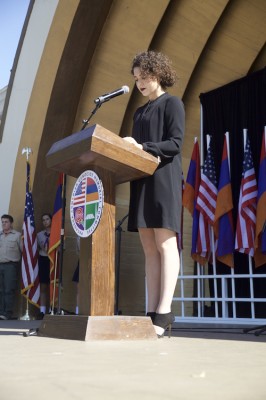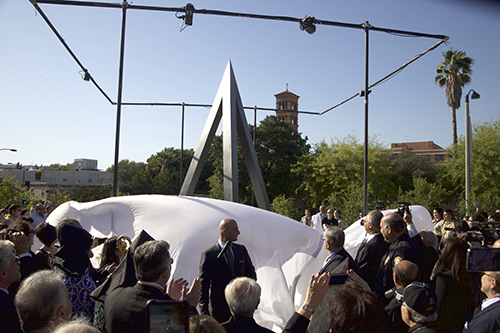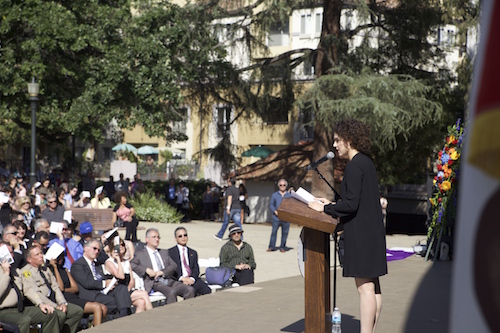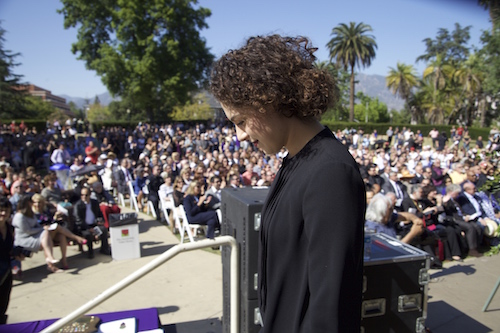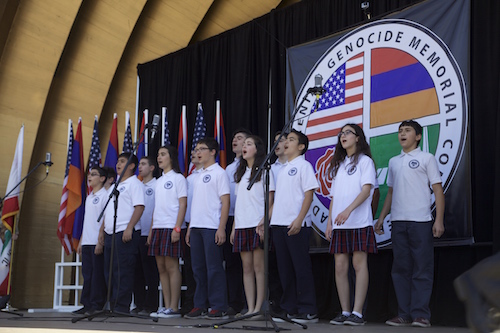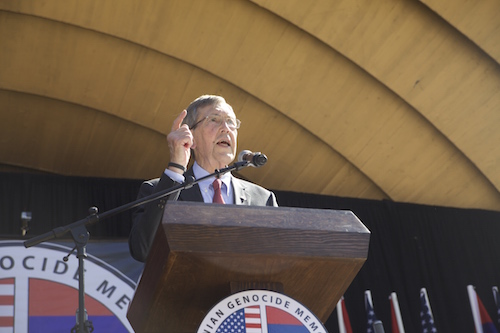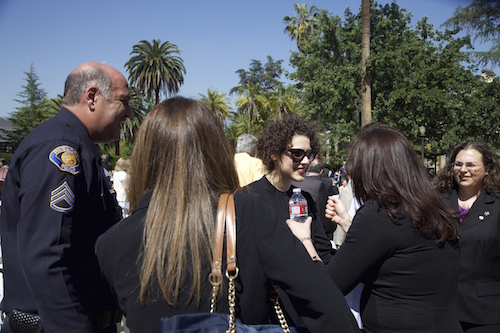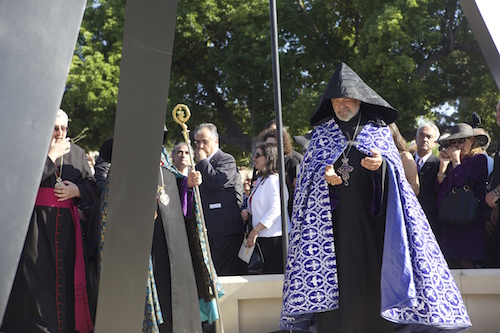Saturday, April 18th, 2015, was a blistering hot day in Pasadena Memorial Park. But the day’s speakers and many in the crowd wore black to the unveiling of the Pasadena Armenian Genocide Memorial, designed by alum Catherine Menard (MFA 14 Environmental Design), whose teardrop concept for the monument was chosen as the winner in 2014 competition, launched by the Pasadena Armenian Genocide Memorial Committee. We caught up with Menard on this momentous occasion to hear how she approached the weight of commemorating the estimated 1.5 million victims who died during a campaign against Armenians and other Christian minorities beginning in 1915, as well as how the experience has changed her.
How did you learn about the competition?
I was asked by Professor James Meraz to join a studio that he created through Designmatters for the specific purpose of designing memorials that we would then submit to the competition.
Are you Armenian or personally connected to the genocide? How did you first learn about the genocide?
I am not Armenian, but now I am certainly personally connected to the Genocide. I first learned about it when James approached me to join the studio. And then, over the course of about 3 months, I did extensive research before designing.
Could you tell us what the design is and how you arrived at it?
The structural form itself is an abstraction of the timber gallows that hung and tortured Armenian leaders, intellectuals, and artists publicly at the onset of the genocide. This was directly inspired by photographic evidence and “pride pictures” taken by Ottoman Turkish officers. Underneath the structure is the ancient Armenian symbol of eternity, which receives 1.5 million teardrops in one year’s time (the accepted estimated number of victims).
What was the process of bringing this into reality? How long did the entire process take? Was it hard?
The process has been an extensive one. After I won the competition, I began working a couple days a week at Moule and Polyzoides (the architect of record) while I was full time at Art Center. I helped draw, design and develop the project for the purpose of getting it approved by Pasadena City Staff and City Council. After it was unanimously approved by both, I continued to make adjustments and help fund-raise, design any graphic print matter they needed, and even designed a website. We had a ground blessing ceremony one year ago, but only officially broke ground 4 months ago. I have been in constant communication with the architect, contractors, and engineers and we have met at least once a week for a Monday meeting to make design decisions on site and keep the project moving forward at top-speed. We are still meeting on Mondays to take care of small items that need resolution.
How did working on this project change you as a designer?
This project completely changed me as a designer. I was so fortunate to experience, and in a lot of ways, lead this work through the entire design process of a public work. I learned that design is truly and intrinsically collaborative, and that is what makes it come to exist in the real world, but what also means it will never be perfect. I’ve become much more comfortable with that. And dealing with the undeniable “reality of reality” will help me to plan and design more effectively in the future.
What was the most unexpected challenge of the process?
There was a time period when I was unsure if the project was going to be built; it was harder than expected to raise the money because there were many other causes pulling the Armenian community for the Centennial, as well as other factors. But after the groundbreaking ceremony, there was an incredible team of Armenian contractors and engineers that assembled, seemingly overnight, and we just started meeting every week and making it happen, piece by piece.
It was entirely miraculous truly a testament to the power of this community when they are unified.
What would you like visitors to takeaway from the memorial?
I would like visitors who are Armenian to feel ownership over the project, and feel that it positively contributed to the visual history and storytelling of the Genocide. And I hope visitors who do not know about the Armenian Genocide will be moved and encouraged to learn more and potentially become advocates in the fight for Recognition.
What advice would you give to current students who aspire to work in a similar field as yourself?
I would encourage students pursuing experience design, sculpture, or anything that has to do with the public realm, to take research and the conceptual process very seriously. It is the best arsenal you have when communicating to get approvals and grants, as well as when you are faced with tough design decisions in the field. If you have done your job, you can always go back to what you’ve established and find the best solutions.

